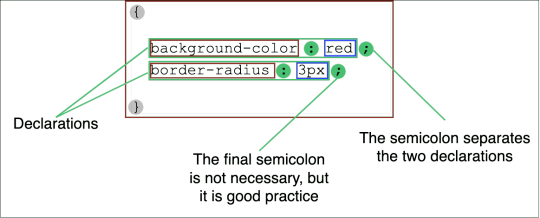#StyleDeclarations
Explore tagged Tumblr posts
Text
Understanding Style Declarations in CSS: A Basics Guide

The Importance of Style Declarations in CSS
CSS, which stands for Cascading Style Sheets, is a fundamental technology for web design and development. It plays a crucial role in defining the visual appearance and layout of web pages. At the heart of CSS lies the concept of style declarations. Style declarations are the building blocks that allow you to control the design and presentation of your web content. Understanding the importance of style declarations in CSS is essential for anyone involved in web development, whether you are a beginner or an experienced developer. These declarations are what enable you to create stunning and user-friendly websites. They provide you with the power to customize the color, typography, spacing, and positioning of elements, ultimately shaping the user experience. In this blog post, we will delve into the significance of style declarations in CSS. We'll explore what they are, how they work, and why they are a vital part of the web development process. By the end, you'll have a clear understanding of how to harness the power of CSS style declarations to create visually appealing and responsive web designs.
1. Introduction to CSS

CSS, or Cascading Style Sheets, is a fundamental technology in web development that allows you to control the presentation and layout of your web pages. It works hand in hand with HTML (Hypertext Markup Language) to define how your content should appear on the screen. Understanding CSS is essential for creating visually appealing and user-friendly websites. Why CSS Matters: - Enhanced User Experience: CSS enables you to style your web content, making it more attractive and readable for visitors. - Consistency: It allows you to maintain a consistent design across your website by defining styles in one central location. - Separation of Concerns: CSS separates the structure (HTML) from the presentation (CSS), making your code easier to manage and update. - Responsiveness: With CSS, you can create responsive designs that adapt to different screen sizes and devices. How CSS Works: CSS uses a set of rules and selectors to target HTML elements and apply styles. A CSS rule typically consists of a selector, property, and value. Selectors specify which HTML elements should be styled, properties define what aspects of the element to style, and values set the styling details. Example of a CSS Rule: CSS p { color: #333; /* Sets text color to a shade of gray */ font-size: 16px; /* Defines font size */ margin-bottom: 20px; /* Adds spacing between paragraphs */ } Here, the selector 'p' targets all paragraphs in the HTML document, and the associated properties and values determine text color, font size, and margin spacing for those paragraphs. Types of CSS: CSS TypeDescriptionInline CSSApplied directly to individual HTML elements using the 'style' attribute.Internal CSSPlaced within the HTML document's Read the full article
0 notes